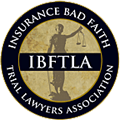Can You Get Whiplash From a Low-Speed Crash?

It does not take a high-speed or catastrophic collision to suffer a serious personal injury such as whiplash. The sensitive muscles, tendons and ligaments in the neck can tear or sustain damage in a low-speed crash if the head and neck move the wrong way. A whiplash injury could be serious enough to require medical intervention, pain medications, a neck brace and time off of work. The person that caused your low-speed collision may be financially responsible for your whiplash-related losses in California.
Where Can Low-Speed Collisions Happen?
A low-speed collision is one that occurs while both vehicles are traveling at five miles per hour or lower. Low-speed car accidents are most common on busy roads and highways with congested traffic. Some drivers may pick up their cellphones or engage in other distracted driving habits to pass the time in slow traffic. This can lead to low-speed collisions with vehicles in front that have stopped without the distracted driver noticing.
Low-speed accidents can also happen due to rubbernecking. A crash on the side of the road may distract a driver enough not to notice the reduction of traffic speed, leading to a second accident. Low-speed crashes usually take the form of rear-end collisions. In a rear-end collision, the driver in the front car’s head and neck may whip forward and backward rapidly from the force of the crash.
It is possible to suffer whiplash even in a low-speed crash. At any speed, the back-and-forth motion from a rear-end collision could be enough to damage the soft tissues in the neck. In higher speed collisions, however, injuries can be more severe. Moderate to high-speed accidents are more likely to cause injuries such as fractured bones, traumatic brain injuries and internal injuries.
What Symptoms to Look Out for Post-Accident
Recognizing the symptoms of whiplash can help you know when to see a doctor. Even if you do not feel any symptoms, however, you should visit a doctor for a checkup after a car accident. The adrenaline from the car accident could be making it more difficult to feel pain, soreness or discomfort from a neck injury.
- Pain or stiffness in the neck
- Pain when moving your head back and forth
- Limited motion in the head or neck
- Tight, knotted or painful muscles
- Headache radiating from the base of the skull
- Tingling or pinpricks in the neck, shoulders or arms
- Dizziness or fatigue
- Blurred vision or ringing in the ears
- Trouble with memory or concentration
- Irritability and depression
Different crash victims may feel different whiplash symptoms after a low-speed crash. Tell a doctor about any sensations or pain you feel after a car accident, even if someone hit you at a low speed. A physical exam and/or imaging scans could help diagnose whiplash or another type of neck injury.
What to Do If You Have Whiplash
First, go to the hospital for an official whiplash diagnosis. Request copies of all medical records, hospital reports, x-rays and bills. Then, contact the other driver’s insurance company to file a claim. Explain that you have whiplash and will need compensation for your damages. If a low-speed crash gave you whiplash, you have rights. California is a fault-based car accident state, meaning the driver that caused your accident may be liable for your injuries.
If another driver struck your vehicle from behind, he or she will most likely be responsible for any injuries you suffered, including soft tissue damage. The at-fault driver’s insurance company may compensate you for losses such as medical bills, prescription medications, medical devices (i.e. a neck brace), property repairs, lost wages and temporary disability. Next, call a Sacramento personal injury lawyer for assistance with insurance settlement negotiations. A lawyer can help you fight for fair compensation for a whiplash injury and other low-speed car accident damages.

















